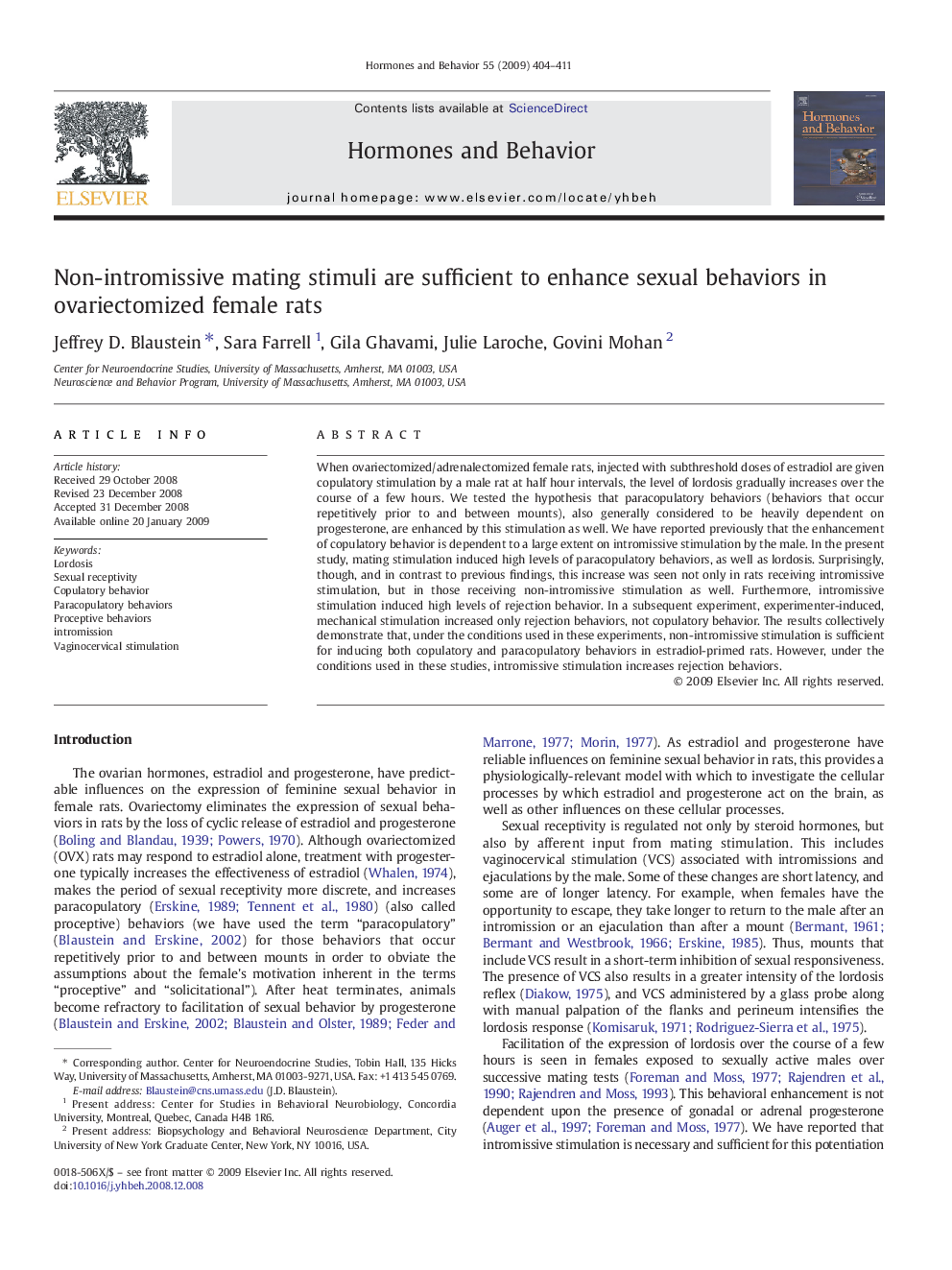| Article ID | Journal | Published Year | Pages | File Type |
|---|---|---|---|---|
| 322839 | Hormones and Behavior | 2009 | 8 Pages |
When ovariectomized/adrenalectomized female rats, injected with subthreshold doses of estradiol are given copulatory stimulation by a male rat at half hour intervals, the level of lordosis gradually increases over the course of a few hours. We tested the hypothesis that paracopulatory behaviors (behaviors that occur repetitively prior to and between mounts), also generally considered to be heavily dependent on progesterone, are enhanced by this stimulation as well. We have reported previously that the enhancement of copulatory behavior is dependent to a large extent on intromissive stimulation by the male. In the present study, mating stimulation induced high levels of paracopulatory behaviors, as well as lordosis. Surprisingly, though, and in contrast to previous findings, this increase was seen not only in rats receiving intromissive stimulation, but in those receiving non-intromissive stimulation as well. Furthermore, intromissive stimulation induced high levels of rejection behavior. In a subsequent experiment, experimenter-induced, mechanical stimulation increased only rejection behaviors, not copulatory behavior. The results collectively demonstrate that, under the conditions used in these experiments, non-intromissive stimulation is sufficient for inducing both copulatory and paracopulatory behaviors in estradiol-primed rats. However, under the conditions used in these studies, intromissive stimulation increases rejection behaviors.
